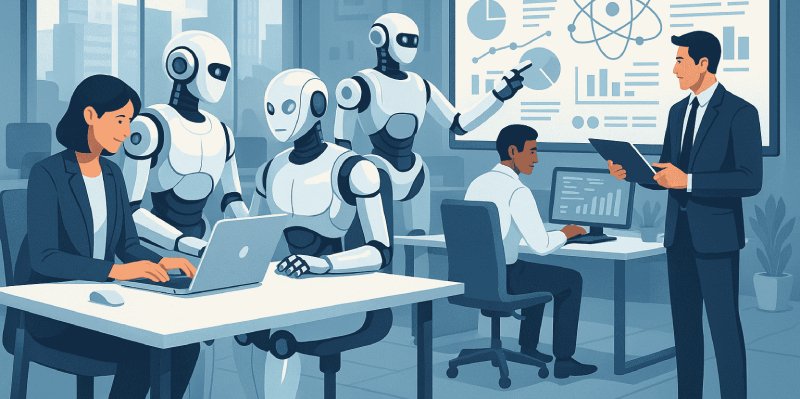In today’s fast-paced digital world, AI and automation are no longer optional — they’re essential. From startups to global enterprises, businesses are embracing these technologies to improve efficiency, reduce human error, and gain a competitive edge.
What is AI & Automation?
- Artificial Intelligence (AI): Systems that mimic human intelligence to perform tasks and improve over time.
- Automation: The use of software or machines to handle repetitive tasks without human intervention.
Together, they form a powerful duo that’s transforming how we work, sell, market, and support customers.
5 Ways AI & Automation Are Changing Businesses
- Smart Customer Support
Chatbots and AI-powered helpdesks are offering 24/7 customer service, reducing support costs and improving satisfaction. - Automated Marketing Campaigns
Platforms like Mailchimp and HubSpot use AI to send the right message to the right user at the right time — boosting conversions. - Data-Driven Decision Making
AI tools analyze huge datasets in real time, helping businesses make smarter decisions without waiting days for reports. - Streamlined Operations
From inventory management to HR workflows, automation is eliminating manual errors and saving thousands of man-hours. - AI-Powered Content Creation
Tools like ChatGPT (yes, like me!) help create blogs, social media posts, and product descriptions faster than ever.
Why Your Business Needs to Act Now
If you’re not using AI and automation, chances are your competitors are. Early adoption means:
- Reduced operational costs
- Increased productivity
- Better customer experiences
- Data you can actually use
How to Get Started
- Identify repetitive tasks in your business.
- Explore AI tools like Zapier, Notion AI, Jasper, or ChatGPT.
- Automate small—scale gradually.
- Track performance and optimize as you grow.
Conclusion
AI & automation aren’t just the future — they’re the present. Businesses that adapt now will lead tomorrow. Whether you're a startup or an enterprise, integrating smart tech into your workflow can drive exponential growth.


